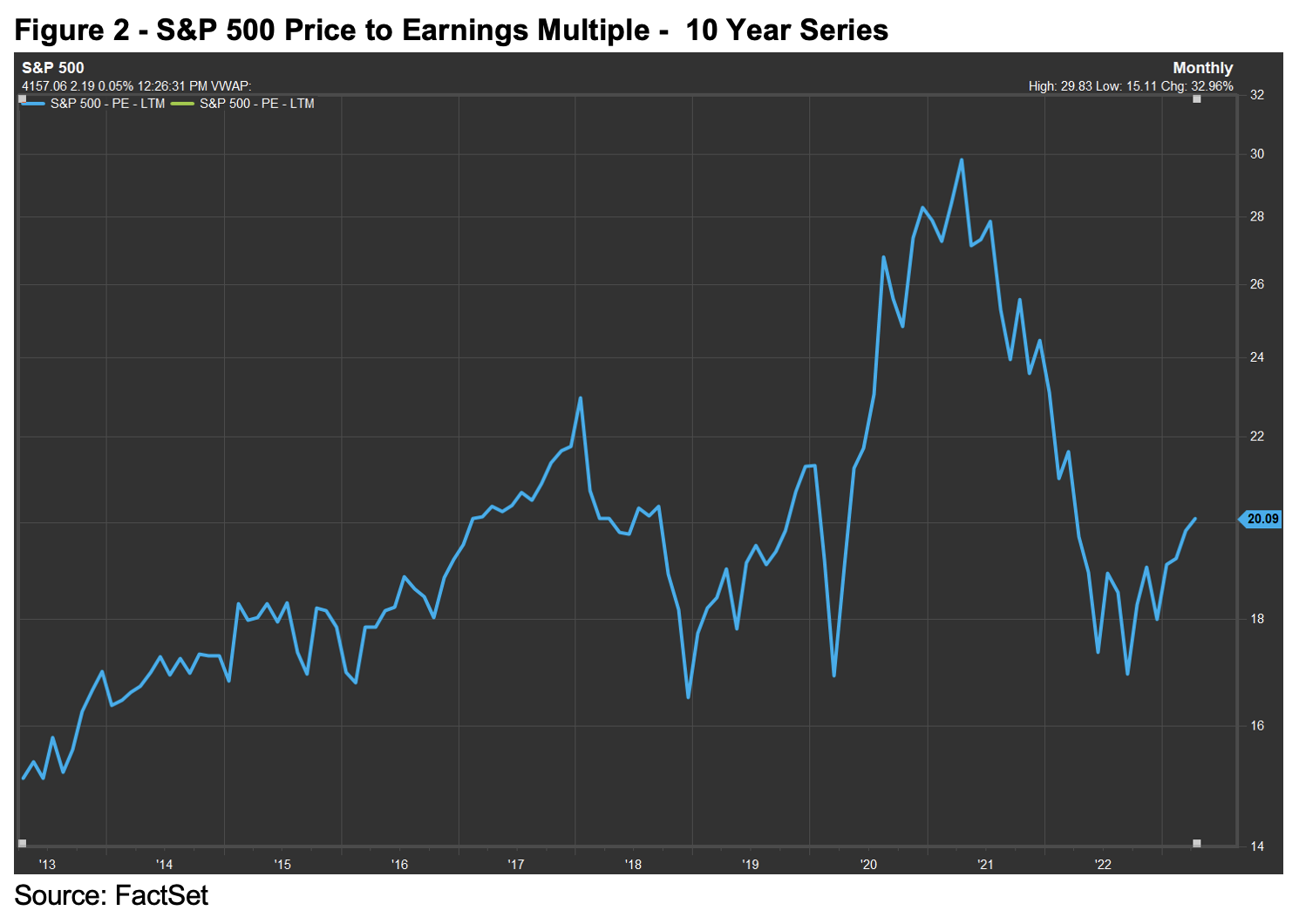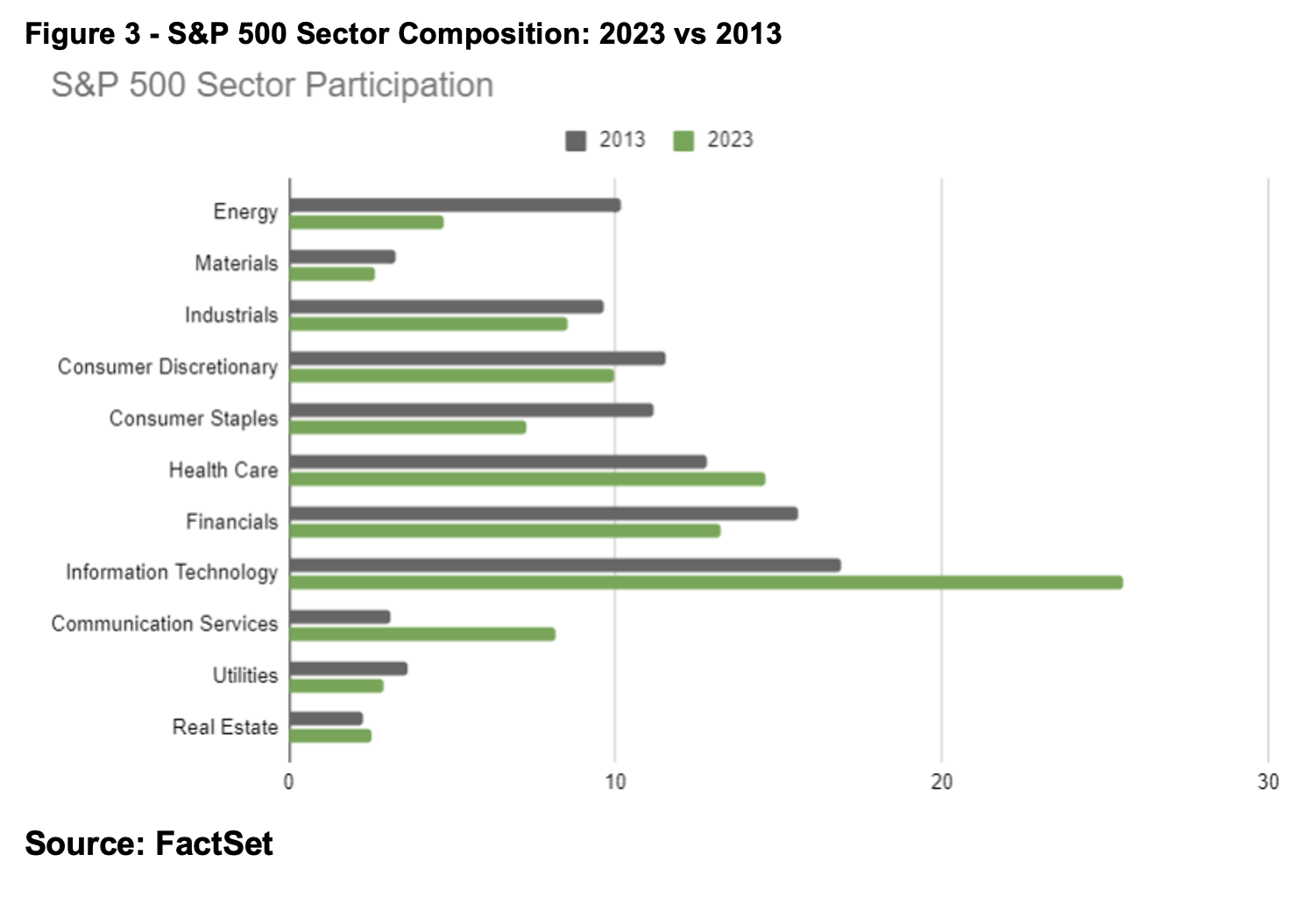
Commentary Highlights
- Most central banks are raising interest rates to fight inflation globally
- US regional banking crisis is forcing yields down and benefiting equity and fixed-income investments
- We expect a material increase in expected returns as interest rates are potentially close to their peak cycle
- Returns at RWM were positive for the quarter across the board, though lagged their relative benchmarks
- US equity returns driven by a select few companies, 80% of the S&P 500 gain for the quarter can be attributed to 2% of the companies in the index
Market Overview
As we close out the first quarter of 2023, we are pleased to report performance improvements in most major asset classes. Equity markets performed well globally, with Canadian markets (S&P TSX Composite) advancing 4.6% while the US (S&P 500) gained 7.37% in Canadian dollars. EAFE (developed markets excluding US and Canada) delivered a surprisingly robust positive return of 8.5%. The main contributor to such impressive performance was French Markets (CAC 40), which yielded 15.3%. This return was in excess of our expectations, considering that financial markets continue to navigate various challenges including the ongoing credit tightening cycle, geopolitical tensions, and inflationary pressures. Notably with France, they suffered some of the largest civil unrest and strike in recent memory. We can now add another potential headwind: the US regional banking crisis that created spillovers to broader US financial systems and, to some degree, international markets.
Indeed, the better-than-expected inflation figures for the US and Canada and their direct effect on future interest rates paved the way for the 2023 Q1 market rebound. Canada’s CPI dropped from a peak of 8.1% to 5.2%, while the US CPI dropped from a peak of 8.9% to now 6.0%. While still above the inflation target of 2%, these noteworthy improvements should be celebrated. We believe that the worst of the inflation fight is still to come as Core inflation can be “sticky”. Historically, each additional percentage drop in inflation will be harder to achieve due to the nature stickiness of inflation.
The fixed income and treasuries market are pricing in significant rate cuts within the next 12 months. This appears optimistic but signals the market’s expectation that inflation will continue its march towards normalcy more quickly or that the economy will stall out due to the rising cost of borrowing and liquidity drying up. We are not making bets on either, rather following our discipline in focusing on deploying capital in areas with the best expected returns based on valuation. We are well positioned to take advantage of our portfolio diversification. Our portfolio return metrics are a testament to our focus on risk management for our clients.
Thank you for your continued trust and confidence in Raintree Wealth Management.
Canadian Equities
We have seen improvements in the Canadian equity markets for the first quarter of 2023. Our core Canadian portfolio delivered a return of 4.25%, lagging slightly behind the TSX 300, which delivered a return of 4.55%. These results came with increased volatility, especially in the first half of March, due to concerns surrounding the banking sector. The collapse of Silicon Valley Bank and the bailout of Credit Suisse, one of the largest investment banking institutions worldwide, by the Swiss government which pledged as much as 109 billion Swiss francs of available liquidity, caused turmoil in the markets and impacted the Canadian banking sector share valuations negatively. The Department of Treasury of the Federal Reserve and the Federal Deposit Insurance Corporation jointly guaranteed all deposits to avoid a banking run that would have been highly detrimental to the US financial system, not to say chaotic. UBS acquired Credit Suisse in a rush deal worth 3 billion Swiss francs ($3.3 billion).
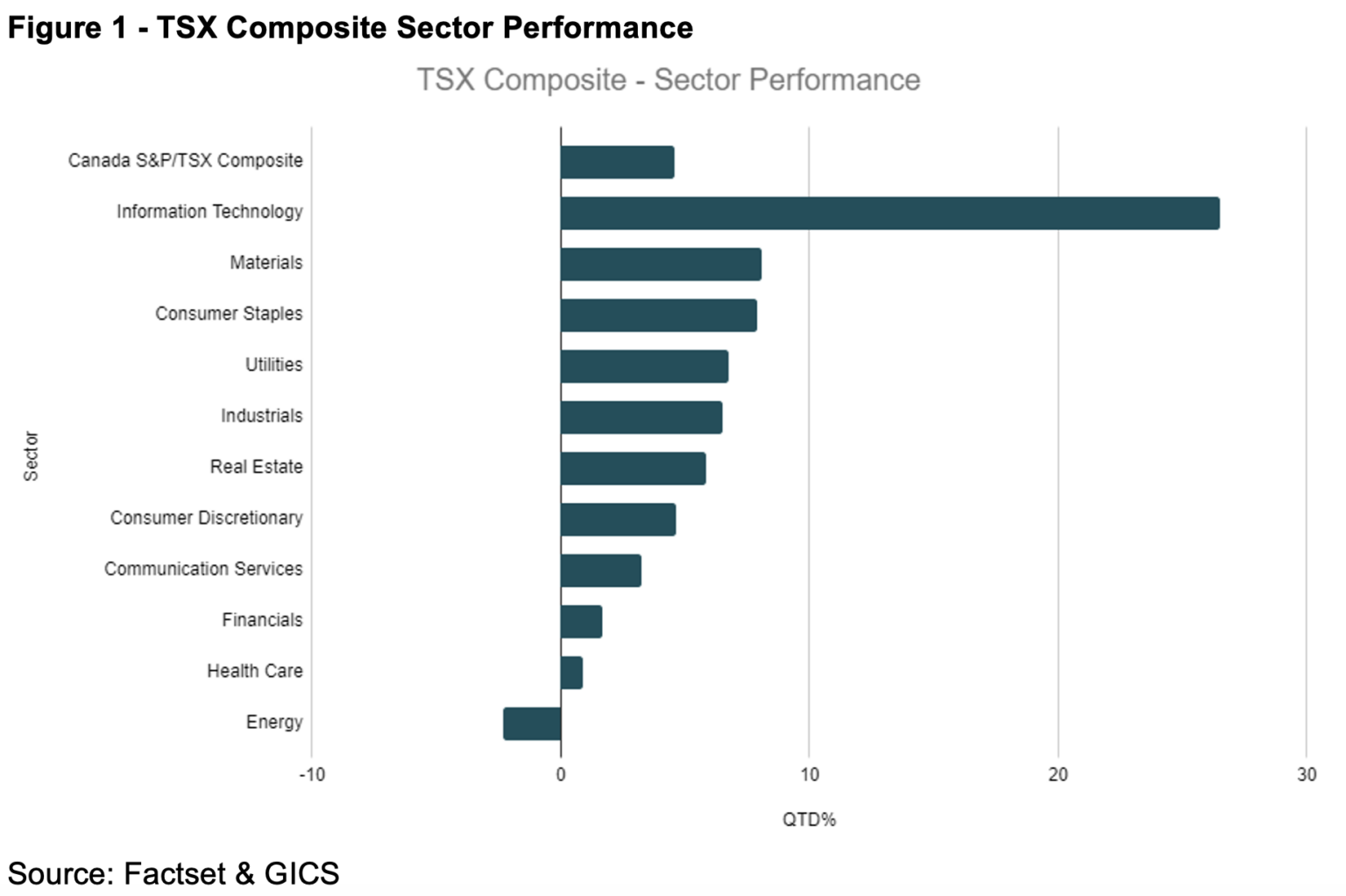
There was consensus that we should expect a slowdown of the economy in 2023 due to an aggressive interest rate tightening cycle that has yet to show its economic effects. Energy products, one of Canada’s most important economic engines, has been volatile and traded in the $60s/barrel during the quarter, a much lower level than the $80s/barrel we saw in Q4 2022. We have seen some improvements with prices slowly returning to the $75+/barrel levels, particularly after OPEC+ announced a production cut. Still, pricing stabilization is only expected in the year’s second half if demand outpaces energy availability.
Technology was the main driver of growth this past quarter, performing an impressive 26% positive return for the sector. Shopify, Canada’s largest player in the technology field, was up by almost 38%. This is largely related to the significant decrease in future interest rates that lowered inflation and banking issues. Tech companies are more susceptible to interest rate changes as their cashflows are more concentrated further in the future compared to other industries, such as utilities.
US Equities
US equities also delivered a strong performance with a 3.8% return, although we underperformed the S&P 500, which delivered a 7% return.
Fixed Income

Global and Emerging Markets
The US dollar continues to gain strength internationally. The dollar is considered a safe haven and combined with a recent record high FED fund rate, puts pressure on the currency. This leads central bankers outside of the US to the hard task of protecting their currency against a rising US dollar, and their main tool is higher interest rates.
On a positive note, European countries had a better-than-expected reaction to the energy crisis triggered by Russia’s suspension of oil and gas as they were able to develop a complex infrastructure to deal with the issue from a short-term perspective. The longer-term issue persists in Europe’s energy dependency, especially on Russia. The UK has moderately stabilized its political crisis that led to three different prime ministers in less than one year. Expansionary fiscal policy remains a concern as the BOE struggles to fight recent record-high inflation. We have seen in the past that when fiscal and monetary policies are not well coordinated, the outcomes can be highly damaging to the economy.

China’s GDP growth rate has accelerated to 4.0% from 2.9% in the previous quarter on an annualized basis as the country reopens. The end of strict COVID-19 lockdowns has created pressure on demand, which has boosted Chinese GDP and raised concerns about international inflation.
Analysts had expected growth as high as 5.5% for the year 2023, which could heat up international trade, especially for countries with an edge on commodity products, such as Brazil, Canada, and Australia. The main risk ahead is political instability caused by the increasing tension among Western and Eastern nations.
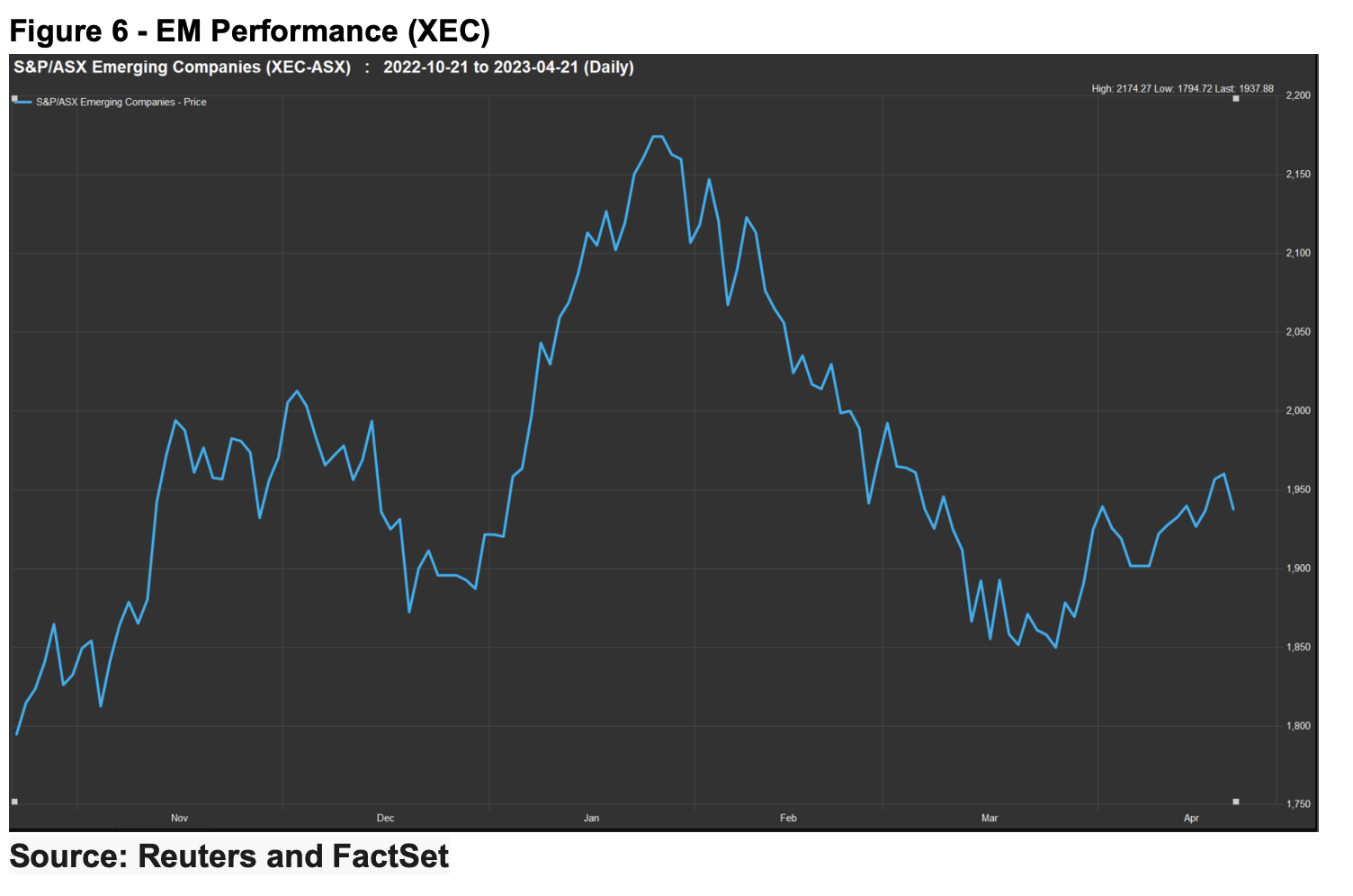
Performance and Management Effect
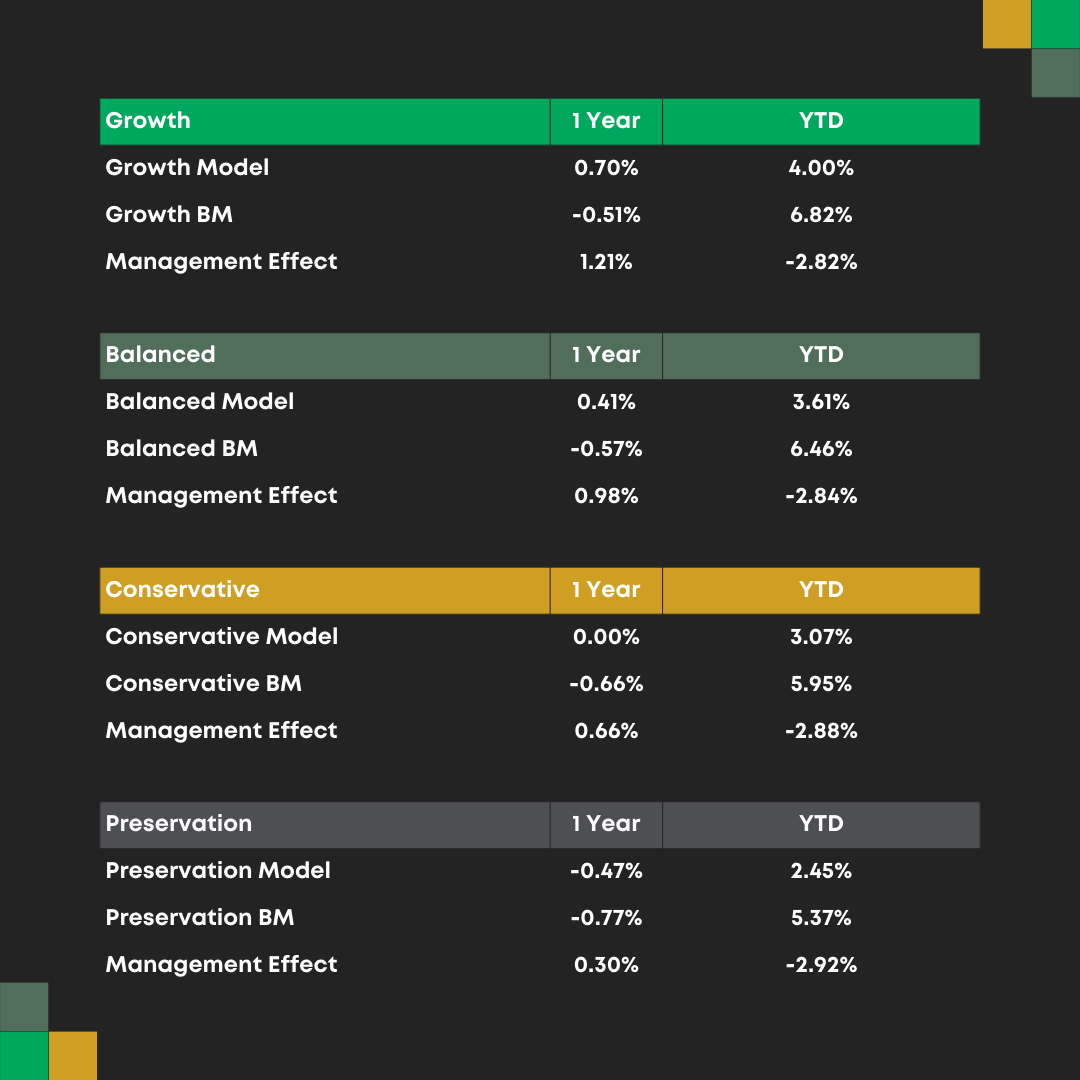
Final Thoughts
As always, we want to thank our clients for trusting us. If you require anything at all, please contact our client services team at rwmclientservices@Raintreewm.com.

